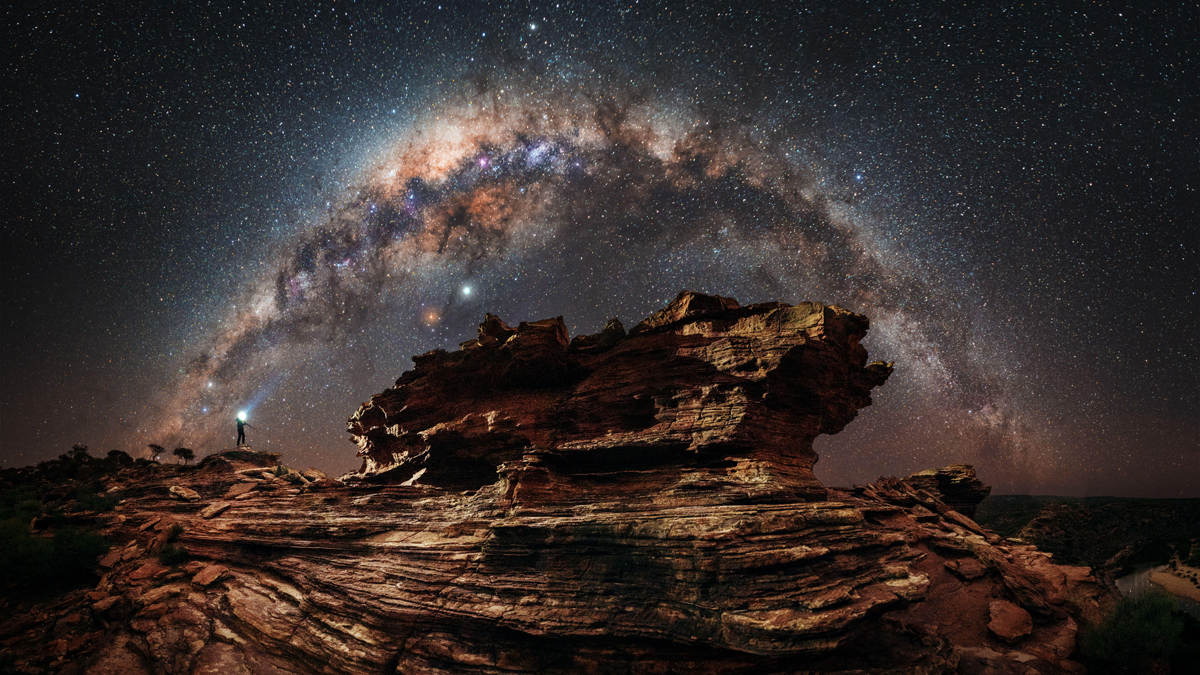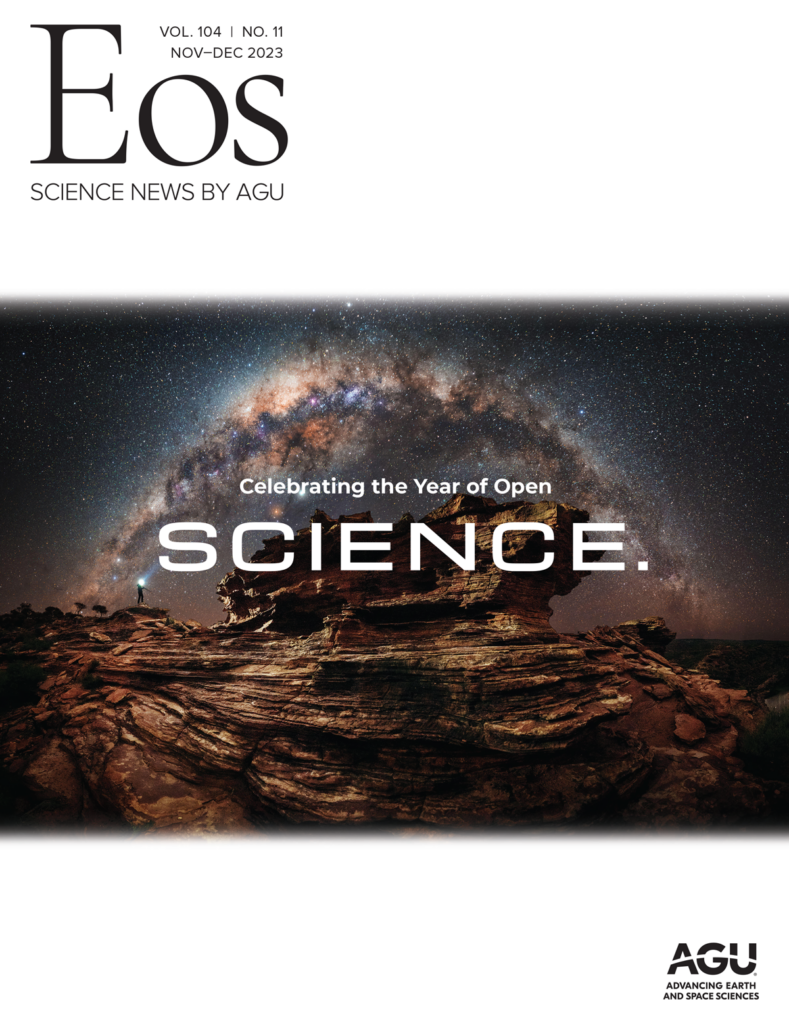With our annual year-end double issue, Eos marks the Year of Open Science with a grand tour of the ways researchers are increasing the depth and breadth of Earth and space sciences.
First, we consider how open science is redefining cultural approaches to academia. Our Mexico City bureau chief, Humberto Basilio, masterfully outlines the myriad ways in which Latin American scientists are developing innovative cultures of scientific achievement that do not rely on the traditional norms of the Global North in “Raising the Visibility of Latin American Science.” In “There is no JOIDES in Mudville,” Damond Benningfield provides a melancholy valedictory for the JOIDES Resolution as well as a short list of alternate opportunities for research at sea. (Heads up: Keep your eyes on Japanese research vessels.) Finally, from fieldwork to lab work, alternates to the familiar burden of overwork are explored in “Academia’s Hidden Price Tag,” by scientist and author Katherine Kornei.
Our next set of articles scrutinizes the ways in which researchers are using the schemas of open science to make data more accessible. Ge Peng dives deep into balancing the findability, accessibility, interoperability, and reusability of data sets (and the manner in which they are shepherded) in the Opinion “Finding Harmony in FAIRness.” Artificial intelligence and machine learning could also help strike a chord, argue Nathan E. Sanders and Rose Hendricks in “AI Could Reshape Climate Communication”, suggesting that large language model–based programs could help the public regain trust in science and scientists. The dizzying array of data that open science makes available necessitates coherent and nimble management, and research scientists Kaylin Bugbee, Deborah Smith, Stephanie Wingo, and Emily Foshee characterize this in the “Art of Scientific Curation.”
The multidisciplinary nature of open science demands collaboration, the focus of our last set of articles. Building on the theme of curation, Kimberly Blaeser, Dwight Owens, Sarah Zhou Rosengard, Kathryn Semmens, and Mika Tosca explore “Why—and How to—Engage Artists in Science.” Shifting from art to politics, Adam S. Ward and Adell Amos’s Opinion “The Supreme Court Is Bypassing Science—We Can’t Ignore It” makes the case for scientists engaging more proactively with policymakers. Finally, Eric M. D. Baer, Karen M. Layou, R. Heather Macdonald, and Sharon L. Zuber incorporate principles of equitability and accessibility in “Strategies for Successful Collaborative Writing.”
Layered between our thought-provoking articles is our beautiful centerfold poster, from our own Kimberly Cartier and Mary Heinrichs. “Layers of Climate Change: Issues and Solutions from Sky to Sea” introduces a particularly relevant set of challenges and opportunities suggested by open science.
We hope the diversity and depth of the articles in this issue encourage you to return to them again and again, for inspiration, interpretation, and innovative ideas.
Wide. Open. Science.
—Caryl-Sue Micalizio, Editor in Chief


